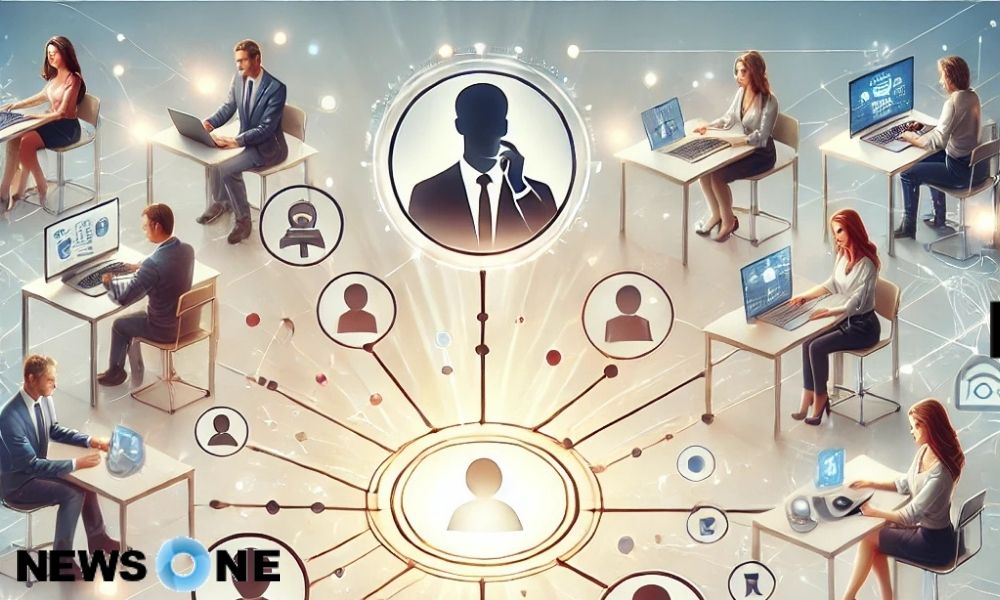
Employee Connection Employee wellness isn’t just about yoga classes or fruit baskets. A robust wellness program demonstrates genuine care for employees’ physical and mental health—naturally deepening connection.
Top wellness initiatives that build connection:
-
Mental health days and flexible PTO
-
Group mindfulness sessions
-
Walking meetings or step challenges
-
Company-wide mental health campaigns
These programs not only prevent burnout but also unite employees around shared health goals, encouraging interaction beyond the daily grind.
Storytelling in the Workplace
Stories connect people in ways data can’t. Sharing personal journeys, team victories, and company evolution helps employees feel like part of something meaningful.
Types of storytelling that boost employee connection:
-
Founder’s journey shared at onboarding
-
Employee spotlight features in newsletters
-
Client success stories tied to team efforts
-
Diversity stories that promote inclusion
Make storytelling a part of your culture. It inspires pride, perspective, and empathy—keys to genuine connection.
Gamification of Connection Efforts
Turn engagement into a fun, shared mission. Gamification can inject energy into connection-building, especially for remote or large teams.
Gamification ideas:
-
Connection Bingo: Complete “talk to someone new,” “recognize a teammate,” etc.
-
Points systems: Earn rewards for collaboration, feedback, or peer recognition.
-
Leaderboard challenges: Friendly competitions in sales, fitness, or learning
Gamification makes building connection a rewarding and continuous journey.
Feedback Loops and Surveys
Don’t guess what employees need—ask them. Regular feedback loops help monitor connection levels and spot disengagement before it’s too late.
Tools for feedback:
-
Pulse surveys (weekly or bi-weekly)
-
360° feedback platforms
-
Suggestion boxes
-
Town hall Q&A sessions
Acting on feedback is key. When employees see their input shaping policies, their connection deepens significantly.
Case Studies of Employee Connection Success
Let’s look at real companies that mastered employee connection:
Zappos
Built on a “people-first” philosophy, Zappos empowers employees to personalize customer interactions and celebrates individuality through quirky events and daily huddles.
Salesforce
Invests in “Ohana” culture (Hawaiian for family), with strong focus on wellness, DEI, and volunteerism. Their connection strategy results in top-tier retention and satisfaction scores.
Buffer (Remote-first)
Buffer maintains employee connection through transparent salaries, weekly updates from leadership, and virtual hangouts. Their employee engagement stays high—even across continents.
These companies prove that connection pays off in culture, loyalty, and brand equity.
Pitfalls to Avoid
Not all connection-building strategies hit the mark. Here are some common mistakes:
-
Forced Fun: Not everyone wants to play virtual Pictionary. Let employees opt in.
-
One-size-fits-all programs: A 22-year-old intern and a 45-year-old manager may need different forms of connection.
-
Ignoring feedback: Asking for opinions and not acting on them is worse than not asking at all.
-
Inconsistent efforts: Connection isn’t a one-time initiative. It’s an ongoing process.
Be authentic, inclusive, and intentional to avoid these pitfalls.
Trends in Employee Connection for 2025
What’s next in the world of employee connection? The trends are exciting, innovative, and deeply human-centric:
-
AI-powered engagement tools: Chatbots that check in on employee mood and recommend actions
-
Virtual reality team-building: Immersive collaboration environments
-
Micro-connections: Emphasis on small, daily interactions that build trust over time
-
Inclusive design: Tools and programs built for neurodiverse and differently-abled employees
-
Employee experience platforms: One-stop dashboards for culture, recognition, and communication
Staying ahead of these trends will help you future-proof your connection strategy.
Measuring Connection and Engagement
You can’t improve what you don’t measure. Fortunately, connection and engagement can be tracked through a variety of tools and metrics.
Metrics to monitor:
| Metric | What it Shows |
|---|---|
| eNPS (Employee Net Promoter Score) | Will employees recommend your company? |
| Turnover rates | Are disengaged employees leaving? |
| Engagement surveys | Overall satisfaction and alignment |
| Absenteeism | Signs of burnout or disconnection |
| Participation in programs | Who’s involved and who’s not? |
Use these insights to identify gaps and optimize your connection-building efforts.
Cost of Poor Employee Connection
Let’s talk money. Disconnection is expensive.
Consequences of poor connection:
-
High turnover: Replacing an employee can cost 6–9 months of their salary.
-
Low engagement: Disengaged employees cost U.S. companies $450–550 billion per year.
-
Reduced collaboration: Teams that don’t trust each other struggle to innovate.
-
Brand damage: Word gets out—bad cultures drive top talent away.
In contrast, companies with strong employee connection enjoy up to 23% more profitability.
Benefits of Strong Employee Connection
It’s not just about avoiding problems—great connection leads to outstanding outcomes.
Benefits include:
-
Higher retention
-
Stronger collaboration
-
Increased productivity
-
Greater innovation
-
Enhanced mental health
-
Stronger customer satisfaction
Simply put: connection turns employees into brand champions.
Conclusion
Employee connection isn’t a luxury—it’s the lifeblood of thriving organizations in 2025 and beyond. From onboarding to leadership to daily communication, every touchpoint is an opportunity to deepen the bonds that turn coworkers into collaborators and companies into communities.
So whether your team is remote, hybrid, or in-office, now’s the time to invest in connection. The payoff? A happier, more engaged, and unstoppable workforce.
FAQs
What is employee connection?
Employee connection is the emotional bond and sense of belonging an employee feels toward their workplace, coworkers, and company mission.
Why is employee connection important?
It boosts engagement, retention, mental health, productivity, and collaboration—while reducing burnout and turnover.
How can leaders improve employee connection?
Through active listening, personalized recognition, consistent check-ins, and leading with empathy and transparency.
What tools help build employee connection?
Slack, Zoom, Donut, Officevibe, and storytelling platforms help facilitate communication and bonding, especially in remote setups.
What are signs of a disconnected employee?
Withdrawal, lack of participation, frequent absences, and declining performance may indicate disconnection.
Can remote teams build strong connection?
Absolutely! With intentional effort, digital tools, and inclusive practices, remote teams can be just as connected—if not more—than in-person ones.

COMMENTS